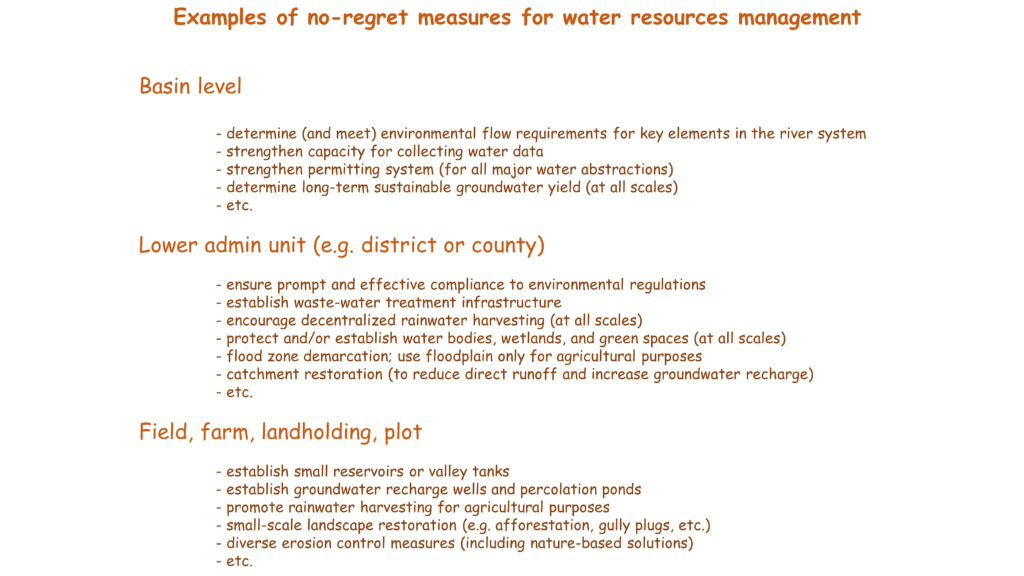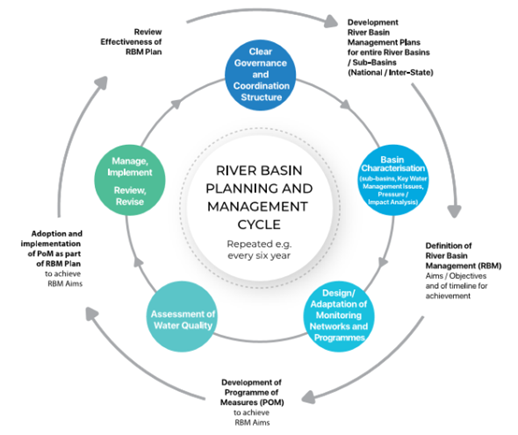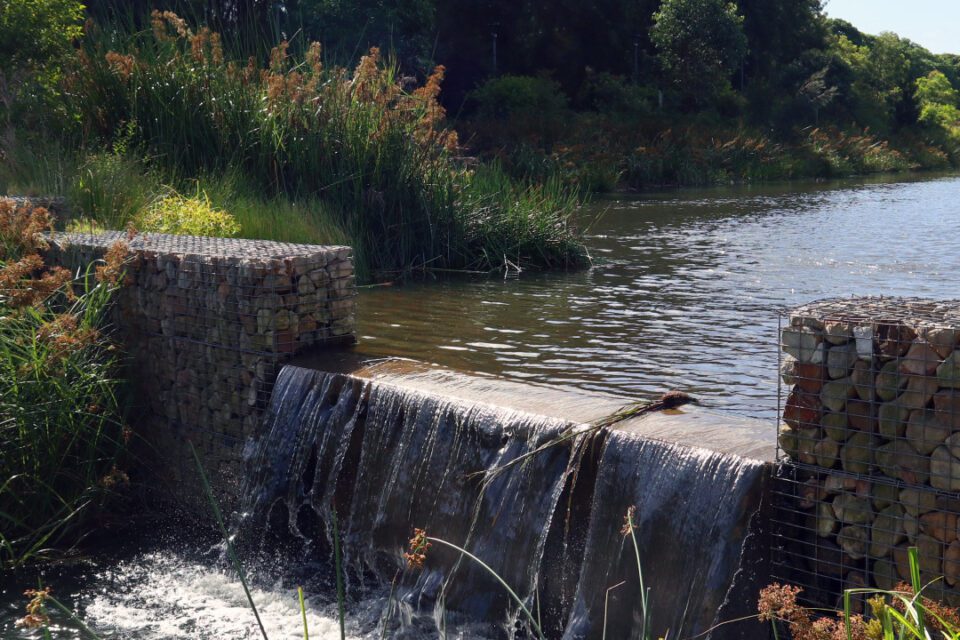Water scarcity is in the news this summer. With temperatures breaking global and local records and quite some reservoirs (almost) running dry, sustainable management of water resources has moved up the agenda.
So, where to start this accelerated push for IWRM?
First some observations, which apply to many basins in the world, specifically in the global South:
- Pressure on finite water resources is unprecedented and growing because of demographic trends, food security concerns, and socio-economic developments
- Extreme weather events are becoming more frequent, leading to more frequent and more severe drought and flood events
- There is generally inadequate water resources management infrastructure—both in terms of ‘hard’ and ‘soft’ infrastructure elements; in fact, water resources management infrastructure (‘hard & soft’) is effectively absent in many basins; eventually—almost inevitably—this will lead to trouble
- The hydrology is poorly understood in most basins and we neither have sufficient water data nor (quantitative) insights in the hydrological processes to improve our understanding; worse, this is probably an epistemological problem—given the uncertainties involved in the hydrological processes and the unpredictable nature of the future climate
- Finally, ‘first do no harm’— the old adage—remains valid; no need to spend resources on solutions that are not well thought through and could do more harm than good or are just wasteful.
Observations 1-3 point to the need for urgent action, while numbers 4-5 call for caution and signal that we are often not yet ready to propose a comprehensive set of interventions. It’s a paradox.
In my professional life this paradox is a real problem. More often than I would like to admit, I am tasked to propose or design interventions while I suspect that the hydrologic analysis is incorrect, or that the overall assessment of the water resources issues is not adequate or too narrow in scope. In some cases, the water resources analysis is in fact wrong but cannot be changed—for now—because of political considerations (either at the side of the client or funder).
No-regret measures will solve this paradox. However, only within the context of the water resources planning and management cycle (see last paragraph of this post). The approach buys time—without wasting it—to improve the hydrological analysis and get a more accurate understanding of the water resources issues and how best to address them.
No-regret measures are defined as ‘measures which are worth implementing no matter which event actually happens whenever consequences are uncertain’ (Coastal Wiki).

Some comments
No-regret measures can be developed at all levels—from basin level to plot. I think the most productive ones—in the short and medium term—are at the lower levels but I will start with a comment at basin level.
The priority to meet environmental flow requirements is a value statement. One that falls squarely in the category ‘first do no harm’. It addresses the rapid decline of biodiversity across the globe and acknowledges the huge ecological value of many riparian ecosystems. Further, this no-regret measure also recognizes that the environment still loses out—in many places—in drought years, when choices have to be made between water for productive sectors (e.g. irrigation) or nature. In my view, choosing against nature is a long-term mistake, despite all the obvious short-term benefits. Better to just bite the bullet.
Field, farm, landholding, plot
Establishing small-scale local WRM infrastructure (physical, managerial, socio-economic) provides local solutions for local water resources issues. Small individual elements are affordable, can be implemented quickly, have limited downstream impacts, are adapted to local conditions, and are easy to manage and maintain (or change, if need be). They barely require external management capacity—which is expensive and often ineffective, and frequently just not available. Further, most management conflicts that may arise from these small infrastructure elements will be sorted out by the community. This follows the central theses of Elinor Ostrom’s work. She asserts that, in most cases, no government or other outside intervention is needed at community level, because communities will self-organize (over time) based on common sense, communication, and trust.
Thus, a collection of small-scale local interventions constitutes the backbone of adaptive and bottom-up water resources management. They represent options for self-management (i.e.: ‘learning’) and can be established in an incremental manner by individual actors without excessive delays. In my view, the best interventions are both small and multi-functional, and preferably organized as ‘beneficial assemblies’. The importance of this setup cannot be overstated.
Obviously, it is recognized that some issues—such as flooding or equitable water allocation at basin or sub-basin scale—can only be addressed by collective action or at a higher level. Thus, some level of higher-order water governance is inevitable. I think the subsidiary principle applies here—more on that in a future post.
Another paradox: there is less need for optimization and complex management structures with increasing numbers of interconnected small infrastructure elements. Because the system will self-organize (over time) while any ‘waste’ will find a productive use elsewhere in the system. This water management architecture, therefore, is better able to adapt to changing climatic conditions and societal preferences and is much cheaper to maintain and manage. Thus, establishing small-scale local interventions (such as small reservoirs) is my preferred no-regret solution!

The River Basin Planning and Management Cycle
Management of a catchment is a continuing responsibility. Developing river basin management plans, therefore, is understood as a spiral process, in which plans are made and implemented, new information is reviewed, feedback is received, priorities are modified and refined, and plans are adapted to changed circumstances. The cycle is then repeated after five to six years.
This process is referred to as ‘adaptive management’. It is characterized by a systematic and institutionalized process to improve management practices based on constant feedback and continuous learning, with the aim to adapt to changing environmental and socio-economic conditions.
The below figure shows an example of the River Basin Planning and Management Cycle; it was adapted from the implementation philosophy and requirements of the EU Water Framework Directive (2000/60/EC).

